What to Plant in August Guide
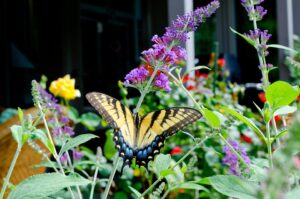
Wow how time flies, just the other day it seems, we were all in high gear as the spring months approach with great anticipation to get outdoors in our gardens and work the soil connecting with nature. Then it was on to the summer months where in spite of the heat we were still determined to reach our goals of completing those garden projects and now we are in the month of August. As summer is about to come to a close we enter the fall months.
Although the fall months may be somewhat quiet there is still a lot to do in our fall gardens, especially to prepare for the winter months and next season’s crop (spring and summer months). Below we will be discussing what to plant in August because the month of August presents many opportunities to keep you ahead of the game that’s filled with many rewards as you reap a harvest.
Vegetables to Plant in August
Growing edible plants in your August garden is a great way to kick this month off so if you’re not sure what edibles to plant then here are a few suggestions just for you.
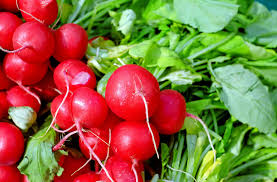
1. Radishes– A great choice of veggies to plant in your August garden are radishes, it is a known fact that radishes are one of the fastest growing crops, the seeds of radishes can be planted during the spring or fall months. Radishes are so easy to grow and can produce crops from season to season. Radishes thrive best in organic-rich well-drain soil. Plant radishes in rows 12 inches apart, this veggie needs 6 hours of sunlight. The seeds of radishes will germinate in 4-10 days.
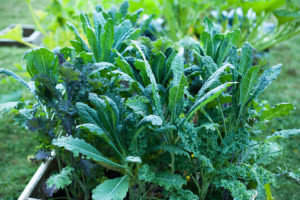
2. Kale- Kale is a leafy green cool season crop, this hardy green crop can survive the cold months, kale is a super veggie that belongs to the cabbage family and may over winter and appear again during the following spring. Kale can be planted in early spring and summer, the soil pH can be anywhere from 5.5-6.5
Kale should be planted in rows and spaced about 8-12 inches apart, and organic-rich soil is ideal for proper growth. Locate an area that gets 6-5 hours of sunlight,
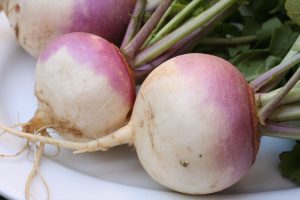
3. Turnip- Turnips are another supper veggie to add to your August garden, turnips can be planted in spring or during the fall months. The newer varieties can be harvested in about 60 days and have a sweeter taste, turnips prefer and organic-rich soil or compost will do just as well.
Although turnips can survive in the partial shade they prefer the full sunlight, if planting turnips from seeds sprinkle seeds and gently rake 1/2 inches into the soil
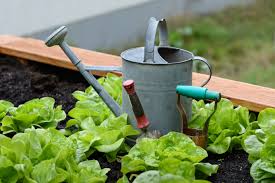
4. Spinach- Spinach is a cold season crop that can survive the winter months, sow spinach in late August new leaves will emerge in October. Once the winter months approach this veggie will go into dormancy overwintering. When the temperature starts to fall cover with a low cloche.
The ideal soil should be organic-rich that drain well, the pH range can be 6.5-7.0, adding compost to the soil is a plus. A sunny location will encourage your spinach to thrive. When sowing seeds space about 12 inches apart and plant to a depth of 1/2 inches, once your spinach has overwintered will produce a fresh crop of leaves in early spring.
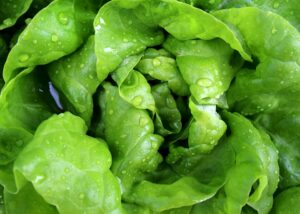
5. Lettuce- Lettuce is a very popular veggie that’s used in salads and on sandwiches, some varieties of lettuce grow from seed in less than 30 days. This fall and winter crop will provide the greens that you need during this time of the year, lettuce is a somewhat hardy veggie that can withstand moderate frost temperatures that are cold during night times.
Lettuce can be overwintered beneath cloches or in a greenhouse, for your lettuce to thrive plant in a fertile organic-rich soil that’s well-drain but will hold the right amount of moisture. The pH level can be either 6.0-7.0, provide your lettuce with 6-7 hours of sunlight, and add 3 seeds to each planting hole half-inch and in rows 10-12 inches apart. Seedlings can be spaced 4 inches apart.
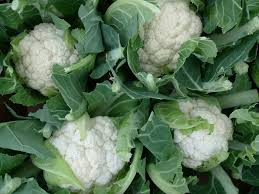
6. Cauliflower- Cauliflower can also be added to your August garden, this veggie is a cold-season crop and can be planted in, early spring, during the fall months, and even winter. And organic-rich soil makes the perfect choice to install your cauliflowers, the ideal pH range for your cauliflower can either be 6.5-6.8.
Give your cauliflower 6 hours of sunlight light to encourage healthy growth, when planting cauliflower seedlings space apart to about 16-24 inches. The soil of cauliflower should be kept moist and not waterlogged which will lead to root rot. Many varieties of cauliflowers take about 74-86 days before harvest.

7. Tomatoes- Consider to be a fruit and not a veggie tomatoes are also on the list to install in your fall garden, tomatoes are widely grown even in the home garden. Harvest your tomatoes before the fall months but in the Southwest, it is possible to grow a fall crop. Tomatoes love organic-rich well-drained soil.
The soil of the tomato plant can range anywhere from 6.2-6.8, tomatoes are sun lovers therefore the ideal light requirement is 8 hours of sunlight. But if you can provide 12-16 hours of sunlight would be even better.
Best Flowers to Plant in August
During the month of August, we can fill our gardens with lots of beautiful colorful flower blooms. Below we will be looking at a few flowering plants that will complement our fall gardens as the winter months approaches.
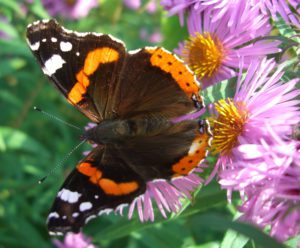
1. Aster flowers- First on our list is the aster flowers, this garden beauty will provide lots of colors starting from late August to late September. Aster flowers are beautiful perennials and a food source for pollinators such as butterflies and hummingbirds, there are many varieties with which to choose.
The white wood variety should be planted outdoors in late fall or early winter, incorporating compost in your soil is ideal for your asters to survive. The soil pH can be in the area of 5.8-6.5, asters can be installed in locations that are partially shaded to full sun. A heavily shaded area will cause asters to become leggy (leaf drop).
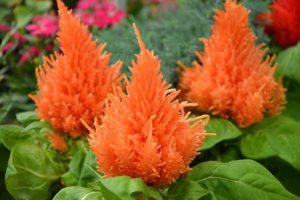
2. Celosia flowers- Celosia is one of my favorites, this feathery garden beauty does well in the colder months, celosia looks great when planted in masses especially when the colors are mixed, although celosia will thrive in sandy soils the ideal soil is and organic-rich soil. The pH range for celosia is 6-6.5.
Celosia loves the cool weather and prefers to be planted in an area that gets lots of sunshine, celosia can not only be installed in garden beds but in pots/containers, and baskets.
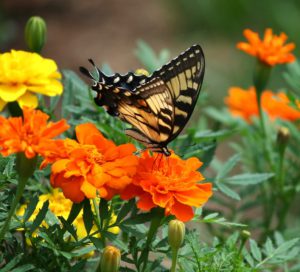
3. Marigolds- Marigolds produce beautiful flower blooms that will work well in your fall garden, most marigolds are annuals but a few are perennials. Marigolds will continue to bloom until the first hard freeze, these garden beauties can be installed in flower garden beds or in pots and containers.
Marigolds will attract pollinators such as butterflies and bees providing a food source for them during this time of the year. Install marigolds in well-drained soil with a pH of 5.8-6.2. Make sure to add some organic to the soil to encourage healthy growth, although marigolds can survive in partial sun, placing them in an area that gets lots of suns is ideal.
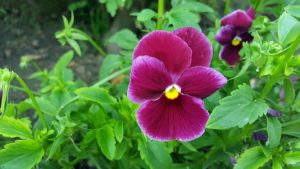
4. Pansies- Pansies prefers the cooler months, there are many cultivars to choose from so you can fill your August garden with an array of colors. Pansies will continue to thrive until there is a hard freeze, these garden beauties thrive in organic-rich well-drained soil.
The soil pH can be in a range of 6.0-6-2, the soil should be slightly acidic, the best location to install pansies is an area that gets lots of sunshine. Some varieties will reseed themselves while others will come back next spring.
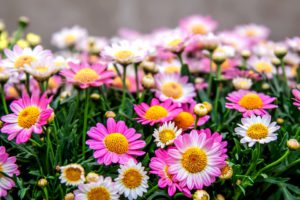
5. Chrysanthemum- Chrysanthemums or mums as they are called are perennial beauties that will fill your garden with lots of colors. The best time to install chrysanthemums is in early spring or during the fall months at least 6 weeks before the first killing frost. To fill your fall garden with lots of beautiful colorful blooms plant chrysanthemums when they are blooming in late summer or early fall and treat them as annuals.
Chrysanthemums require a sunny location to perform their best, a well-drained soil is ideal for your mums to survive. Adding compost will help also. The soil’s pH range can be anywhere from 6.5-7.0, when installing these garden beauties gave a spacing of 18-24 inches, the reason for this is to provide proper airflow to safeguard against fungal issues.
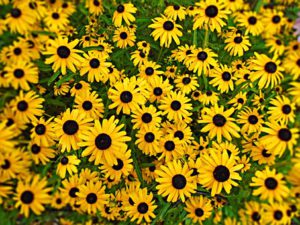
6. Black-eyed Susan- the black-eyed Susan will fill your fall garden with bright colors, take advantage and install this garden beauty during the early fall months. This charming perennial gets its name in part from its black center that attracts butterflies, birds, and bees. Black-eyed Susan can also be found growing in open fields.
Black-eyed Susan can thrive in a variety of soil types and prefers neutral soil, and can grow anywhere from 3 ft or taller with a spread of 12-18 inches.
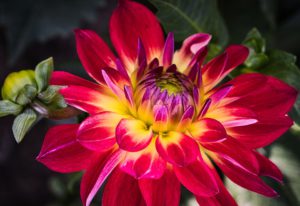
7. Dahlias- Dahlia is a good flowering plant to add to your fall garden, expect this garden beauty to start blooming 8 weeks after planting usually by mid-June. Dahlias will continue to bloom from September to October and thrives well in a good loamy soil that drains well.
The pH range for dahlias is 6.5-7.0, give your dahlias a spacing of 12-18 inches because they can grow quite large. For your dahlias to thrive and bloom their best install them in full sunlight.
More Crops to Plant in August
- Carrots
- Cabbage
- Brussels sprouts
- Broccoli
- Collard greens
- Leeks
- Mustard greens
- Summer Squash
- Potatoes
- Swiss Chard
- Peas
- Cucumbers
More Flowering Plants for your August garden
- Viburnum
- Forget-me-nots
- Nigella
- Continus-Smoke Bush
- Polyanthus
- Nemesia
- Wild Carrot
- California poppies
- Cornflowers
- Sedum
The final word on what to plant in August
There are many more plants that can be added to this list to plant in your August garden, The colder months might be slowly approaching or should I say quickly approaching. You to can reap a good harvest so get started now so you can grow healthy plant crops that can take you into the colder months even overwinter for next spring. Go for it and get busy working in your August garden, why should the fun stop now when there is so much to grow and harvest? With that said let’s get started.
About the author
Norman loves being in the garden, both at home and for his job....
he is 'Natures Little helper' being outdoors, growing his vegetables and flowers from an early age.
Now having spent over 22 years in the profession he want to give some of his knowledge to others...
his vast array of hints and tips you will find scattered over this site will help you no end growing plants in your garden.

Thanks for this timely post about fall plantation in your garden.
It is all the fruits, veggies, and flowers in one place.
How nice is it to have the produce from your backyard freshly picked?
The details about the fertilizer and the pH requirement add to one’s knowledge for growing appropriate seasonal produce and flowering plants.
I never knew we could grow spinach now for the fall. Thank you for sharing essential knowledge with the world.
I took the liberty to share your post with my husband in facebook.
I am so happy to help, thanks for commenting and sharing this information. All the best to you have a good day!
Hey thanks for this post!
This is a really interesting and useful post for me as I wanted to grow something but was having second thoughts as it’s nearing towards autumn and winter. There are so many plants to harvest I’m surprised, I always thought summer or spring was the ideal environment. Definitely going to be considering planting some of these, currently spinach, tomatoes and cauliflower from the veg are on my list and pansies and marigolds from the flowers.
Thanks again for providing this information!
Hello, I am so happy to help, wishing your much success and a great harvest in your fall garden. Have a good day!